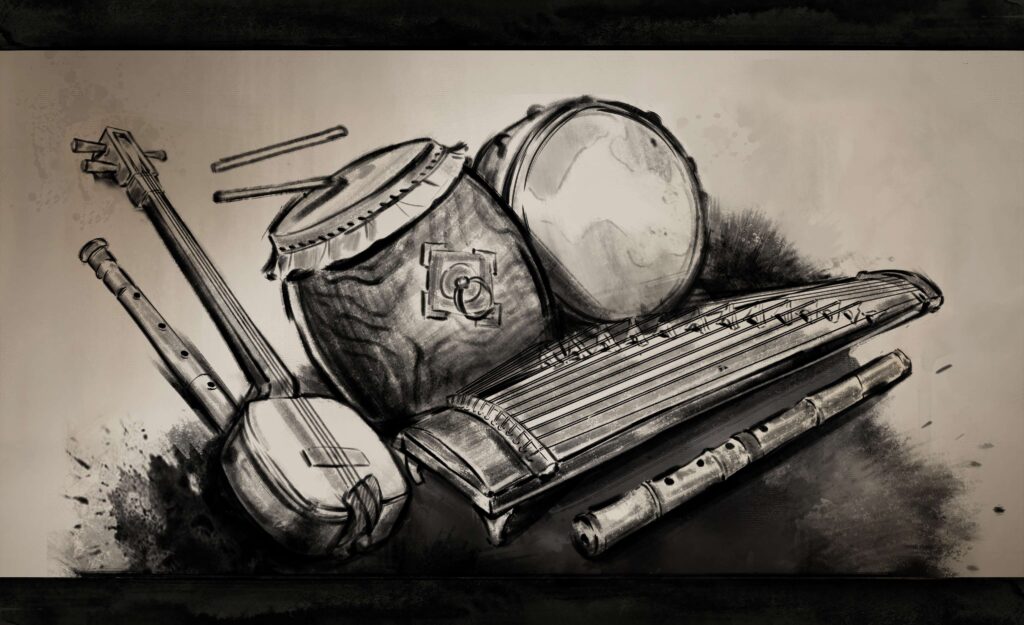
Video games, with their ability to immerse players in captivating virtual worlds, owe a portion of their magic to the artistry of sound. Within ‘Tale of Ronin,’ we have aimed to bring the rich environment of Edo period Japan to life through sound, from the swing of a samurai’s blade to the rustle of cherry blossoms. In today’s blog post we want to briefly explain our audio design process, reveal some of our developers greatest inspirations, and share some sound-bites directly from the game.
To craft and design the sounds of the game, our developers use specialized tools such as Ableton Live. Following that, the audio game engine Wwise is used to integrate audio into “Tale of Ronin”, allowing us to add to the immersive experience of our world.
Our developers have many diverse inspirations when it came to the audio for “Tale of Ronin”, from talented artists such as Hayashi Eitetsu, an acclaimed percussionist, and Mizuyo Komiya, a first class koto player, to immersive soundtracks of Japanese Samurai games like Ghosts of Tsushima.
Beyond creative works, the Japanese culture as a whole played a huge role in influencing the sounds and music for “Tale of Ronin”. The art of Sumi-e, minimalistic Japanese ink painting, has been a large influence on the visual style of the game. This desire to find complexity in the simplistic was also applied to the audio design for “Tale of Ronin”, creating a cohesion between the graphics and sound.
To listen to some early reveals of music and sounds that you might hear in the game, check out this audio clip down below:
If you’re interested in learning more about the development of “Tale of Ronin”, or want to be the first to see more sneak previews of the game, make sure to follow us on Facebook, Twitter, Instagram, and join our newsletter.